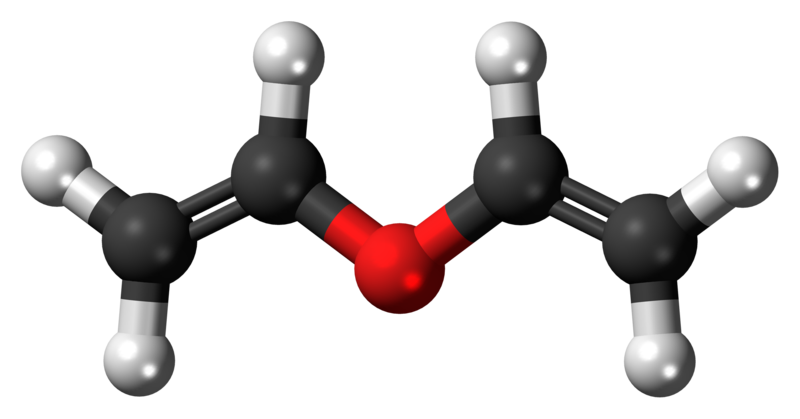Schlüsselunterschied – allylische und vinylische Kohlenstoffe
Funktionelle Gruppen sind sehr wichtig für das Verständnis der verschiedenen physikalischen und chemischen Eigenschaften organischer Moleküle. Die Begriffe allylische und vinylische Kohlenstoffe geben an, ob das Kohlenstoffatom direkt oder indirekt an eine Doppelbindung in einem Molekül gebunden ist. Der Hauptunterschied zwischen Allyl- und Vinylkohlenstoff besteht darin, dass der Allylkohlenstoff das Kohlenstoffatom ist, das an das doppelt gebundene Kohlenstoffatom angrenzt, während das Vinylkohlenstoffatom eines der beiden Atome ist, die sich die Doppelbindung teilen.
INHALTSVERZEICHNIS
1. Überblick und Hauptunterschied
2. was ist allylischer Kohlenstoff
3. was ist vinylischer Kohlenstoff
4. Seite an Seite Vergleich – allylische vs. vinylische Kohlenstoffe in tabellarischer Form
5. Zusammenfassung
Was ist allylischer Kohlenstoff?
Allylischer Kohlenstoff kann als das Kohlenstoffatom beschrieben werden, das der Doppelbindung benachbart ist. Dieses Kohlenstoffatom ist der Doppelbindung am nächsten, aber es ist nicht Teil der Doppelbindung. Mit anderen Worten: Dieses Kohlenstoffatom ist an ein Kohlenstoffatom gebunden, das wiederum doppelt an ein anderes Kohlenstoffatom gebunden ist. Die Kohlenstoffatome in der Doppelbindung sind sp2-hybridisiert. Der allylische Kohlenstoff ist jedoch sp3-hybridisiert. Er ist über eine Einfachbindung an das sp2-hybridisierte Kohlenstoffatom gebunden. Die Elektronendichte um dieses Kohlenstoffatom ist geringer als die der Kohlenstoffatome in der Doppelbindung. Die allgemeine Formel kann als CH3-CH=CH2 angegeben werden. Da es nicht direkt an die Doppelbindung gebunden ist, wird dieses Kohlenstoffatom nicht von Reaktionen beeinflusst, die an der Doppelbindung stattfinden, wie z. B. elektrophile Additionen. Wasserstoffatome, die an diesen allylischen Kohlenstoff gebunden sind, werden als allylischer Wasserstoff bezeichnet. Der allylische Kohlenstoff kann als Brücke fungieren, die eine Kohlenstoffkette und eine Doppelbindung verbindet. Hier ist die C-H-Bindung schwächer als normale C-H-Bindungen. Das liegt daran, dass die Elektronen um diesen Kohlenstoff herum durch die Doppelbindung verdrängt werden. Daher sind diese Stellen sehr reaktiv.

Abbildung 01: Das Atom in Rot ist ein allylischer Kohlenstoff.
Was ist ein vinylischer Kohlenstoff?
Vinylischer Kohlenstoff ist ein Kohlenstoff, der an einer Doppelbindung mit einem anderen Kohlenstoff beteiligt ist. Er ist sp2-hybridisiert. Der vinylische Kohlenstoff bildet eine Doppelbindung mit einem anderen Kohlenstoff, der ebenfalls sp2-hybridisiert ist. Beide an dieser Bindung beteiligten Kohlenstoffe sind vinylische Kohlenstoffe. Die Elektronendichte um diese Atome ist höher als die Dichte um die Allylkohlenstoffatome. Die allgemeine Formel lautet CH2=CH2.
Vinylkohlenstoff ist eine Art von funktioneller Alkenylgruppe, da der Kohlenstoff in der funktionellen Alkengruppe enthalten ist. Die Vinylgruppe leitet sich von dem entsprechenden Alken ab. Daher wird dieser Kohlenstoff auch als Alkenylkohlenstoff bezeichnet. Manchmal kann dieser Kohlenstoff über Doppelbindungen von beiden Seiten an andere Kohlenstoffe gebunden sein. Dann werden alle drei Kohlenstoffatome als Vinylkohlenstoffe bezeichnet. Diese Formel kann wie folgt angegeben werden: CH2=C=CH2. Since these carbons are directly bonded to the double bond, they undergo the reactions such as electrophilic addition.

Figure 02: Allylic and Vinylic Carbons
What is the difference between Allylic and Vinylic Carbon?
Allylic vs Vinylic Carbon |
|
| Allylic carbon is a carbon atom bonded to a carbon atom that in turn is doubly bonded to another carbon atom. | Vinylic carbon is a carbon that is involved in a double bond with another carbon. |
| Hybridization | |
| Carbon atom in an allylic group is sp3 hybridized. | Vinylic carbon is sp2 hybridized. |
| Bond Length | |
| C-H bond length in allylic carbon is higher. | Vinylic C=H bond is lower. |
| Bond Type | |
| Allylic carbon only forms a single bond. | Vinylic carbon can have either two double bonds in its sides or one double bond. It forms at least one double bond. |
| Number of Hydrogen Atoms | |
| Allylic carbon can have a maximum of 3 hydrogen atoms. | Vinylic carbon can have only two carbon as the maximum number. |
| Carbon Atom and Double Bond | |
| Allylic carbon act as a bridge to combine the double bond with the rest of the molecule. | Vinylic carbon makes the double bond. |
Summary – Allylic vs Vinylic Carbon
The difference between Allylic and Vinylic carbon depends on whether the carbon atom is bonded directly or indirectly to a double bond. Allylic carbon indirectly relates to a double bond whereas vinylic carbon is directly involved in a double bond. Ein weiterer wichtiger Unterschied zwischen Allyl- und Vinylkohlenstoff ist, dass Allylkohlenstoff sp3-hybridisiert ist, während Vinylkohlenstoff sp2-hybridisiert ist.